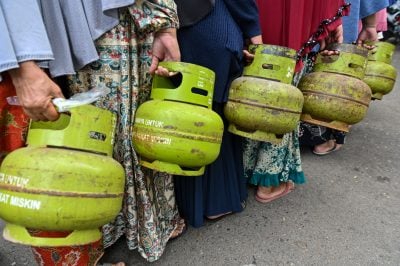Ethiopia’s indigenous grain teff is garnering worldwide attention as a new superfood, bringing both opportunities and risks for Ethiopia’s farmers and consumers.
Stacked along the corridors of Mama Fresh on any given day are boxes of fresh injera ready to be whisked away to nearby Bole International Airport in the Ethiopian capital, Addis Ababa.
From there, Ethiopian Airlines make global deliveries of this pancake-shaped spongy bread, a centuries-old Ethiopian staple made from the indigenous grain teff now making a global health food name for itself.
Teff’s tiny seeds are high in calcium, iron, protein and amino acids, and are also gluten free. Even before the modern state of Ethiopia existed, Ethiopians were grinding teff into flour to make injera, remaining unaware of the nutritional gem in their midst. But growing appetites for traditional crops and nutritious foods mean customers all over the world are after a teff fix too. And Mama Fresh’s efforts to capitalise on this growing market have captured the interest of US-based venture capital firm Renew Strategies.
“We liked the vision to create Ethiopian cuisine around the world and make it as recognisable as Indian or Mexican food – to have the recognition of ‘Oh, I feel like Ethiopian tonight’ rather than just being in small, niche diaspora markets,” says Matthew Davis, a partner at the Addis Ababa office of Renew Strategies. “And as we learnt more about teff, and the bigger movement around it, that was icing on the cake.”
Increasing demand has allowed Mama Fresh to grow from a business started with $5,000 and housed in tin-roofed sheds into one with annual revenue of more than $800,000. It moved into a new factory in 2014. The company employs more than 100 people, helping it produce the 3,000 injera flown six days a week to Washington DC in the US. It also flies injera to Sweden three times a week, to Norway twice a week and to Germany three times a month.
Under the radar
Outside Ethiopian restaurants and diaspora communities, teff has remained largely anonymous for decades. But that’s now changed. In flour form, teff can be used to make foods ranging from bread and pasta to tortillas, pie crusts and cookies, offering a far larger potential market than just diaspora Ethiopians in need of a taste of home.
“People are dreaming of teff nowadays. After thousands of years, it has become the trendy thing over here,” says Sophie Sirak-Kebede, a British-Ethiopian co-owner of London-based Tobia Teff, which sells a variety of teff-based products. “Predominately people here are buying teff bread. Those who cannot eat wheat or who are heath conscious opt for it.”
Tobia Teff’s sales have increased by up to 40% during the last 14 months, and even the UK’s National Health Service has signed on as a regular customer to cater for gluten-intolerant patients. Yet despite praise for teff’s nutritional properties, it comes with a drawback.
“Teff is a low-yield crop,” says Zerihun Tadele, an Ethiopian researcher at the Institute of Plant Sciences at the University of Bern, Switzerland. And because of its previously sheltered existence, “very little research and investment has been done on the crop”.
This has contributed to recent teff harvests failing to keep pace with Ethiopia’s increasing population, resulting in many Ethiopians struggling to afford teff to make injera.
“A shortage of teff would be like asking an Ethiopian not to breathe – it’s our breakfast, lunch and dinner,” says Sirak-Kebede.
Furthermore, cautionary tales about other previously heralded superfoods, such as the Andean grain quinoa, illustrate potential hidden consequences when indigenous staples find eager customers in more affluent countries, such as malnutrition for locals unable to afford higher local prices, and conflicts over land as farmers sell entire crops to meet demand.
Government ban
In an effort to keep local prices down, the Ethiopian government implemented an export ban on raw teff, an understandable measure given the circumstances, according to some.
“The government has to cover the daily consumption of its own people before it exports outside,” says Sirak-Kebede, while noting the government mustn’t lose an opportunity that could benefit local farmers and generate valuable foreign earnings. The government’s Agricultural Transformation Agency is currently focused on increasing teff production to at least match domestic demand, after which exporting should be more viable. And according to some industry insiders, word has it that the government may lift the ban later this year.
“The opportunity it would present to the country is significant, and the benefit over the long term will far outweigh the risks,” says Davis. “But the industry has to commercialise and professionalise and do that in a parallel growth trajectory rather than it just opening up to everyone and hurting the local economy and consumers. So I think the government is going to be very cautious and control that by giving licences to a select, controlled number of companies or exporters.”
Even if such licences are forthcoming, Davis urges caution and careful analysis by potential investors: “Anyone who might get into this space has to look at the numbers and whether they make sense – the biggest costs for us with Mama Fresh come from transport, logistics and shelf life.”
Foreign teff
Increasing global demand for teff doesn’t have to turn to just Ethiopia, however. Unlike quinoa, with production limited to Bolivia and Peru, teff can be grown in countries with soil and weather conditions similar to Ethiopia’s. These range from Mediterranean countries to Australia and American states such as Idaho – currently about 25 US states grow teff.
Recreating the genuine teff taste is far from guaranteed though. US farmers grow about 15 varieties of teff while nearly 4,000 varieties have been identified in Ethiopia.
“In America, injera is made with teff mixed with wheat and barley, but we make it with only water and teff,” says Hailu Tessema, adding how Ethiopia’s particular weather, water and soil all go toward influencing the taste and quality of its teff.
If there is no beating Ethiopian teff and foreign markets respond accordingly, the Ethiopian government could gain a much-needed source of foreign exchange and means to boost the livelihoods of some of the more than 6m Ethiopians growing teff. The vast majority of those farmers still use cattle stamping on teff grass to release the seeds inside and wooden pitchforks to throw grass in the air – known as winnowing. Such traditional farming methods are embedded in Ethiopian agriculture, while the roar of engines from injera-loaded planes taking off attests to the growing appeal of, and the rewards to be had from, this ancient grain.
“The health benefits of teff is where I see the long-term growth opportunity for the country,” says Davis, who tries to eat an injera-based meal at least once a day in Addis Ababa. ‘Eating ‘Ethiopian’ could become a really attractive alternative to the more traditional ethnic cuisines people are eating in Western economies.”
Want to continue reading? Subscribe today.
You've read all your free articles for this month! Subscribe now to enjoy full access to our content.
Digital Monthly
£8.00 / month
Receive full unlimited access to our articles, opinions, podcasts and more.
Digital Yearly
£70.00 / year
Our best value offer - save £26 and gain access to all of our digital content for an entire year!
 Sign in with Google
Sign in with Google 


